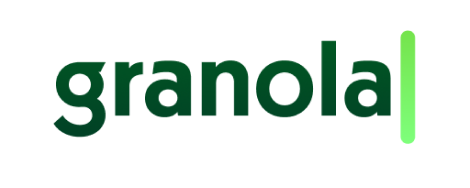Why Slack is a “breath of fresh air”
In an era when millions of fans use beauty influencers for glow-up tips, demand for the world’s best makeup brands can run hot. So makeup enthusiasts can thank Sephora South-East Asia (SEA) for giving them access to all the top-notch hair, beauty and skincare products that their hearts desire.
The company runs Sephora’s omni-channel retail operations in Singapore, Thailand, Australia, New Zealand and Malaysia. It also has franchise operations in India and Indonesia and an online-only business in the Philippines. To service these diverse markets, Sephora SEA has employees and partners distributed throughout these regions, and it needed a tool for effective collaboration. It trialled several tools, like Skype for Business, Google Hangouts and Facebook Workplace, but Slack emerged victorious.
‘Communication is complex in an organisation like ours because of our geographic and cultural diversity. Slack helps solve communication issues by making information more accessible,’ says Bregadeesh Samapathy, Sephora SEA’s Chief Technology Officer. ‘Slack was a breath of fresh air. Simple IM tools limited how we could collaborate, whereas with Slack we could create focused threads or channels for certain topics. It quickly became easier to model work in, and around, Slack.’

‘It was Slack’s integrations paired with the ease of communication that set it apart. You can create focused threads and design work around Slack’s flexibility.’
Advancing adoption from the bottom up
Before Slack at Sephora SEA, cross-collaboration was inhibited by email and other workflow management tools that created more complexity than clarity. ‘Piecing information together and having focused conversations was difficult on email,’ Samapathy says. ‘There were times when I felt like I was wading through hundreds of email threads – it was like a quagmire.’
The movement to Slack was organic. It was first adopted by the company’s engineering and product teams, followed by its UX and UI teams and other digital functions. Pretty soon, leadership took notice, seeing how Slack removed friction from remote collaboration.
‘At some point, we realised that Slack just worked. So we scaled the idea up to the leadership team. After that, Slack became the communication platform of choice. It was integrated into the onboarding process,’ says Samapathy.
One of the main benefits of Slack is its integrations with other platforms. Sephora SEA has improved productivity by customising its digital HQ around commonly used apps like Zoom, Google Workspace, Microsoft Suite, Jira, Confluence and AWS.
‘It’s Slack’s integrations paired with the ease of communication that set it apart. You can create focused threads and design work around Slack’s flexibility,’ says Samapathy.
A more human culture, from anywhere
In Slack, deep collaboration for flexible teams is easy, thanks to dedicated channels for specific projects and threaded conversations. ‘Slack models how human communication works, as opposed to having to adapt your communication style to the tool,’ says Samapathy.
For flexible workforces, working from home can potentially impact a workplace’s unique camaraderie and energy. To overcome this, Samapathy suggests making space for fun and self-expression in Slack. For example, Sephora SEA employees like to use custom emoji and GIFs when working remotely.
‘If I think about Sephora’s culture, it goes beyond simply innovating in the beauty space and focusing on the customer. It’s about having fun while we’re doing it. This would be harder to do without Slack,’ Samapathy says.
‘If I think about Sephora’s culture, it goes beyond innovating in the beauty space and focusing on the customer. It’s about having fun while we’re doing it. This would be harder to do without Slack.’
Building a rich ecosystem for connection and innovation
Sephora SEA works with external consultants and developers worldwide, as well as its customer service agents based in the Philippines. So employees need a secure place to collaborate with external partners. That’s where Slack Connect comes in. It allows Sephora SEA’s employees to move conversations with trusted partners out of siloed email threads and into Slack.
The company also uses Huddles – lightweight audio and screen-sharing that re-creates informal discussions – to connect without having to schedule meetings. ‘Sometimes you’re trying to get a point across or relay context, but it’s difficult or time-consuming to type,’ says Samapathy. ‘You can jump on a call and get your message across. Slack Huddles replicate those office moments when people stop by your desk to ask a quick question.’
Slack increases transparency, too. For example, the company has a channel called #dev-deployments dedicated to deployments on its websites and apps. If an update is rolled out, a change-log is published on Slack that its customer service, development and subscriber teams can all view.
‘We roll out deployment notifications when pushing live updates on the Sephora app or website,’ says Samapathy. ‘We started adding our monitoring tools and alerts around it as well. This has streamlined our deployments by alerting our engineers to collaborate on any issues in near real time.’
The company is also trialling using Slack to simplify in-store communications. It has created a workspace for all store managers and assigned one account to each store. This means that headquarters can broadcast messages to store managers, who can then share messages with retail associates in each store.

Slack was the only tool that could bring together such a diverse workforce, help it build a cohesive culture and supercharge innovation. ‘Post-Covid, every business is a digital business. You will have people working across the world and they won’t be adhering to standard hours of work,’ says Samapathy. ‘I think tools like Slack give companies the flexibility to work effectively wherever their teams are.’















